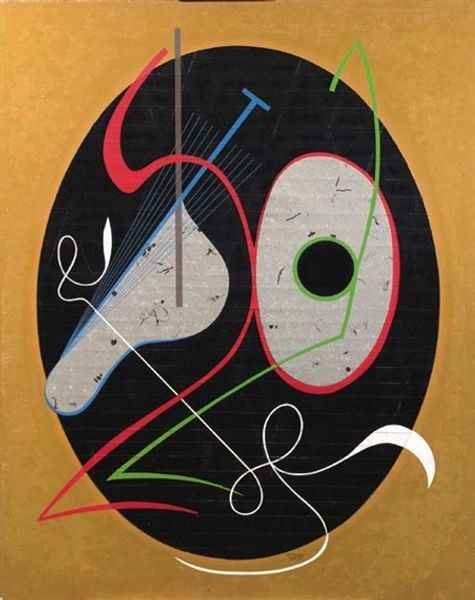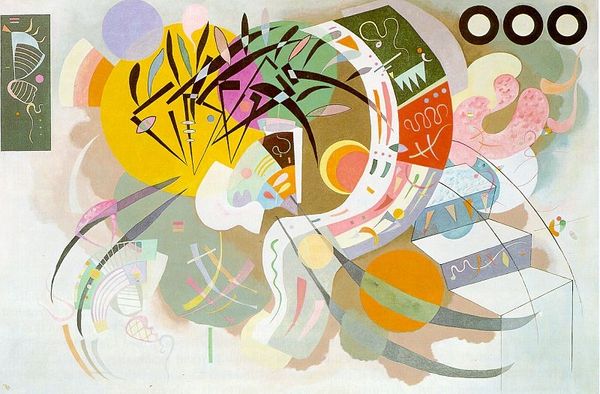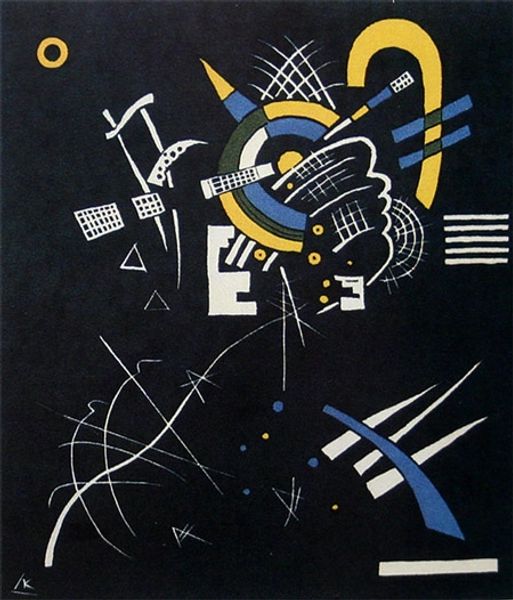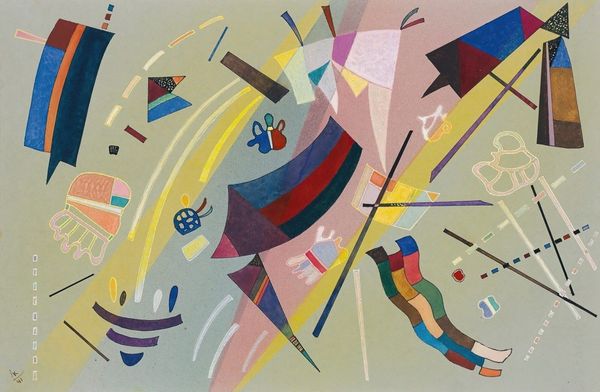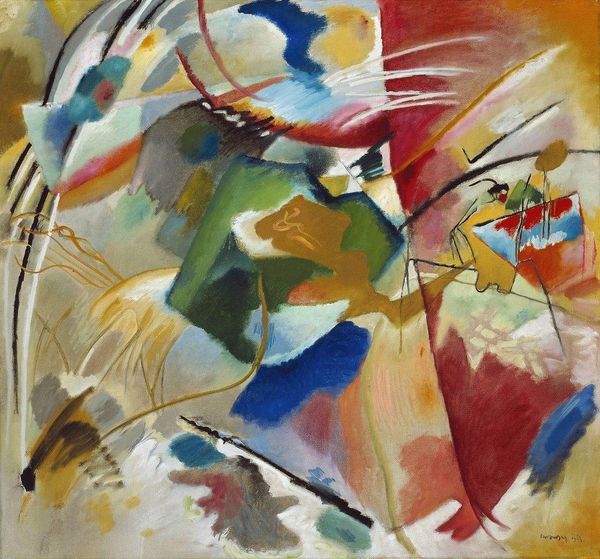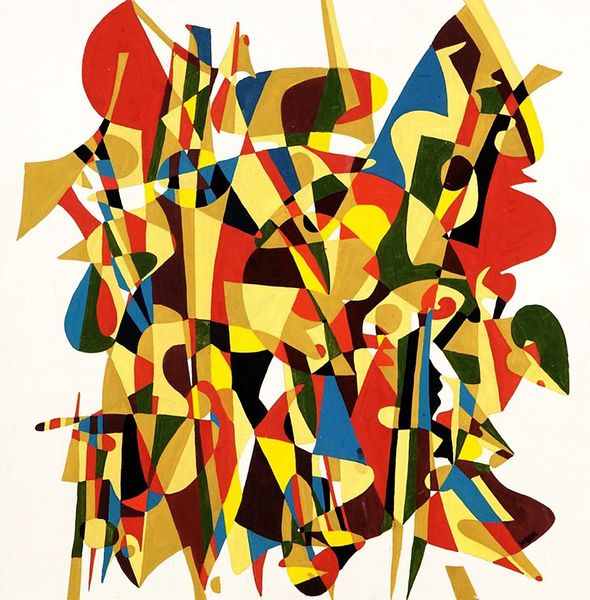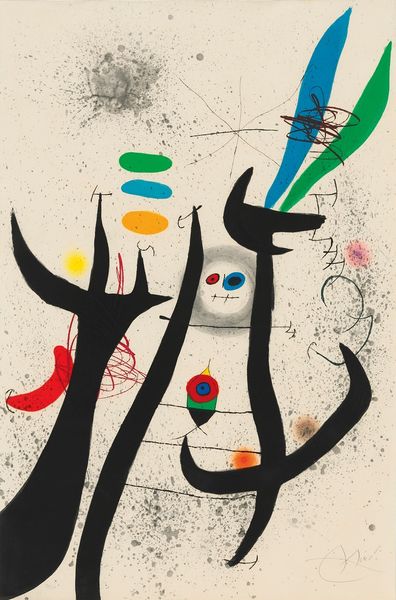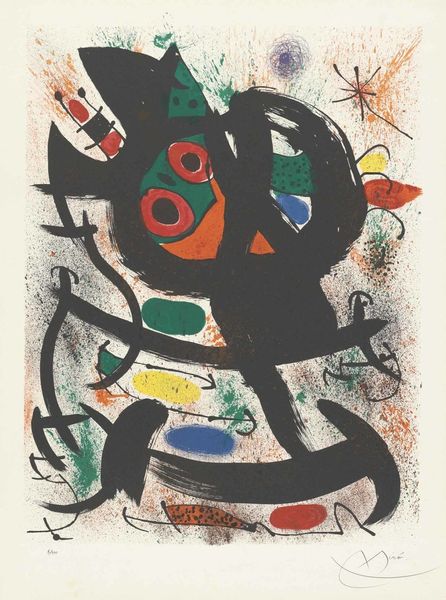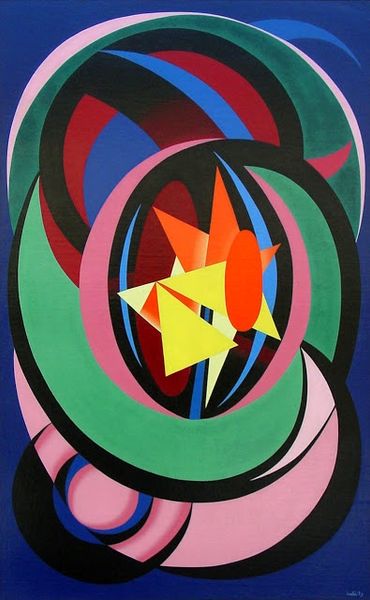
Dimensions: 24.8 x 21.8 cm
Copyright: Public domain
Curator: Welcome. Here we have Wassily Kandinsky's "Small Worlds," created in 1922, an arresting piece of abstraction. Editor: It strikes me as incredibly playful, almost chaotic, yet strangely balanced. All those sharp angles and vibrant colors juxtaposed against what feels like a neutral ground. What's going on here? Curator: Kandinsky, particularly during his Bauhaus period, was deeply invested in the spiritual in art. This piece reflects that—it is thought to portray an alternative, non-objective reality, an ideal society almost, reduced to its purest form. Editor: Interesting. And the lack of a distinct focal point seems deliberate, doesn’t it? There’s no hierarchy, no clear subject. It is almost as if Kandinsky were rejecting traditional notions of power structures even in art, reflecting similar societal rejections of the time. Curator: Exactly. Look at the dynamic tension created by these freely floating geometric shapes and lines, how the composition works in visual space to evoke emotion and rhythm divorced from material reality. Kandinsky himself saw art as a form of synesthesia—connecting colors and forms to music and emotion. Editor: Do you think the artwork achieved that synesthetic ideal? The yellow certainly zings. The blue grounds, but there is so much to digest. Curator: I believe so, to some degree. Of course, individual experiences will vary, but Kandinsky intended for viewers to actively engage with the piece and generate their own unique sensory experiences from it. Editor: Thinking about the political landscape in the early 20th century, post World War I, perhaps this non-representational style was also a form of artistic resistance to the existing order? Curator: Undeniably. The break from traditional representation also signified a desire to break away from traditional societal constraints. Editor: Considering his historical role then, Kandinsky almost presents an alternative world, a visual utopia unbound by the realties that his community knew. Curator: Exactly. "Small Worlds" indeed opens our minds up to these many different possible and existing realities. Editor: I appreciate the way this work prompts viewers to build their own personal and political meaning within the space that Kandinsky created. Curator: The work remains a testament to Kandinsky's vision of art's capacity to reflect and, potentially, transform our experience.
Comments
No comments
Be the first to comment and join the conversation on the ultimate creative platform.
